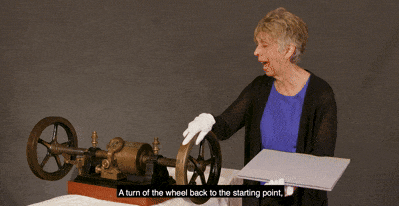“Mr. Thomas A. Edison recently came into this office,” a December 1877 Scientific American article describes, “placed a little machine on our desk, turned a crank, and the machine inquired as to our health, asked how we liked the phonograph, informed us that it was very well, and bid us a cordial good night.”
Over a dozen people gathered in that office to hear the crackled sounds of this new audio invention: the Edison tin foil phonograph, also called Edison’s Talking Machine.

Manufactured for Edison by S. Bergmann & Company, the machine’s stylus would imprint sound waves onto a fragile sheet of foil made with tin, not dissimilar from the aluminum foil we use today. When listening to the recording, “the stylus traced those indentations, causing the diaphragm to recreate a recognizable version of the original sound.”
Imagine yourself in 1877, when it wasn’t possible to capture sounds. From the National Museum of American History:
“This is the earliest machine for recording and playing recorded sound… from a world in which there were no voicemails, no podcasts, or karaoke nights.”

NMAH curator Carlene Stephens demonstrates how the tin foil phonograph works in the vid above. She explains:
“In 1878, the tin foil would be wrapped around this drum. A skilled operator would shout into the mouthpiece, and the mouthpiece consists of a vibrating diaphragm attached to a needle. The sound waves from the shouting would make indentations in the tin foil as the operator rotated the entire drum with this wheel by hand… A turn of the wheel back to the starting point would permit listeners to hear the sound.”

The tinfoil used in these early phonographs had durability issues, making recordings unplayable after a few uses. Yet despite this, the design of recording mechanisms have remained largely unchanged; it was the development of more durable recording materials that eventually allowed the sound recording industry to thrive.
Related reading at the Library of Congress: History of the Cylinder Phonograph.
Watch these related videos next:
• Sound is a vibration, a demonstration
• The Science Behind String Telephones
• How does a music box work? – The Curiosity Show
• Decoding the Voyager Golden Record
• Will Computers Ever Hear Like People Do?
Bonus: How does sound travel to our brains?
Curated, kid-friendly, independently-published. Support this mission by becoming a sustaining member today.

